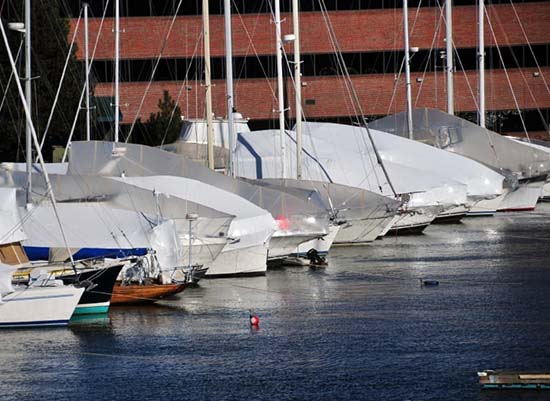
Boats are subjected to a series of wet and dry cycles and other environmental elements, ranging from hot and humid days in the summer to potentially freezing temperatures in the winter to salt air, dirt, hailstorms, bird droppings and more year round. This makes finding the right boat cover a must in order to protect your investment.
Whether you’re buying a boat cover for the first time or replacing an older one, it’s important to understand what to look for among the various options you have to choose from. Here are some common myths to be aware of as you do your research.
Myth: Any cover will work for my boat.
Reality: To adequately protect your boat, you need to buy the right cover.
Buying a cheap boat cover or using a universal cover may seem like a good idea, but it’s a costly mistake. It doesn’t make sense to risk saving a couple hundred bucks at the expense of ruining a boat worth tens of thousands or more.
The right cover should fit snugly, and be made for the exact year, model, and manufacturer of your boat. If the cover doesn’t fit right, water and debris will get inside your boat and potentially ruin it. Also, be sure to use a cover that’s made of high-quality fabric which is waterproof, UV resistant, and mold and mildew resistant. These qualities will go a long way in protecting your watercraft, and also determine whether your cover will last for a single season or a decade.
Myth: The tighter the boat cover, the better.
Reality: Boat covers should be water tight, but loose enough to allow air to circulate.
There’s a tragic tale described in boating magazine about a guy in the Florida Keys who wrapped his boat up tight to protect it from the wet summer season while he went out of town for six months. When he returned, he found a greenhouse of black mold and mushrooms growing inside his boat, making it a complete loss. The lesson? Yes, keeping water, snow, and ice out is important, but so is letting the cover breathe to prevent “locking-in” moisture.
Myth: I can wait to buy a cover.
Reality: Buy a high-quality boat cover as soon as possible.
The longer you wait to cover your boat, the greater the risks that your boat will be damaged (and the higher the costs will be to repair the damage). If you’re not sure which cover to buy, ask the manufacturer and/or a reputable retailer for a recommendation.
Myth: Boats don't need to be covered when in storage.
Reality: Whenever a boat isn’t being used, it needs to be covered.
Whether you’ve bought a new boat and it’s still in storage, or you’re planning to store your boat once the summer is over, don’t assume just because it’s in storage that it doesn’t need to be covered. It does. If your boat will be stored inside, a good cover will help protect it from dust, mice, etc. If it will be stored outside, a quality cover will help protect it from inclement weather.
Myth: Some boat covers create condensation.
Reality: Boat covers don’t create condensation; they only trap the surrounding environment.
If a boat gets put away dry, it will stay dry unless it gets disturbed or the surrounding environment changes. If it gets put away wet, it will still be damp once it’s uncovered. It’s that simple.
Now that you know the five common misconceptions about boat covers,download our free eBook, "What You Don't Know About Custom Boat Tops/Covers Can Be Costly"
